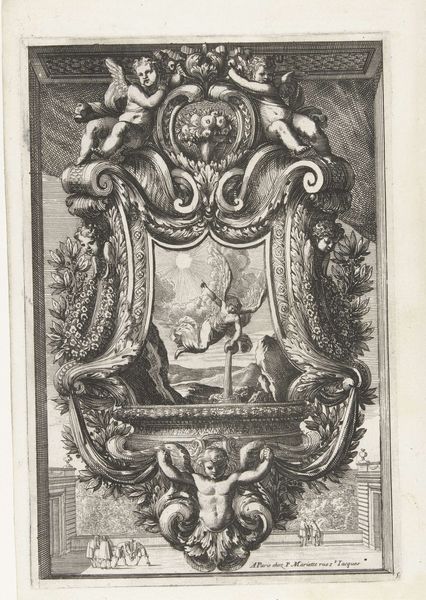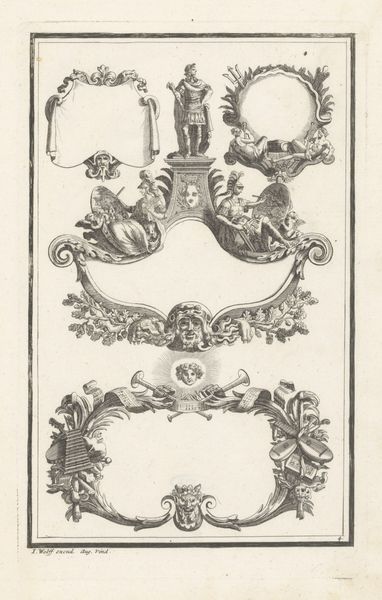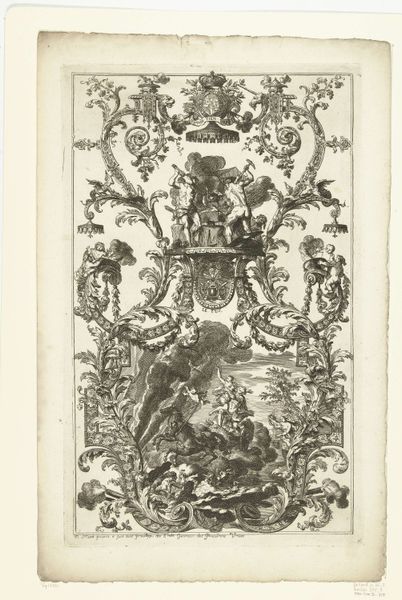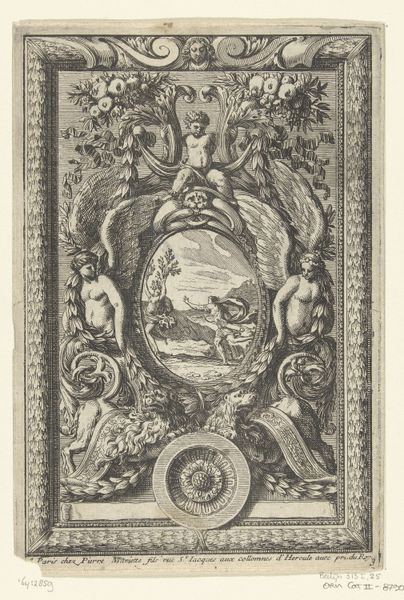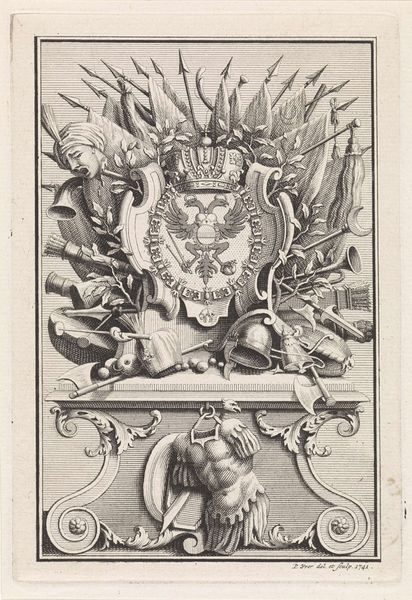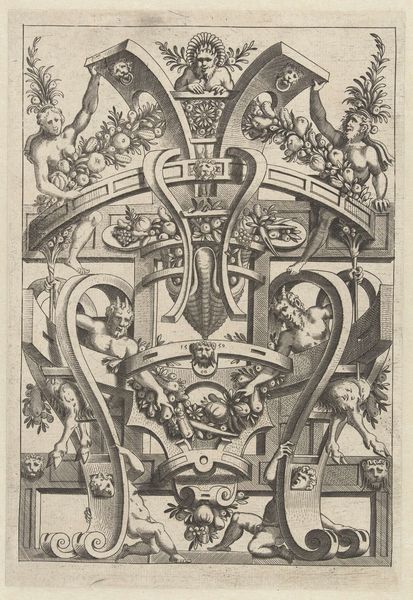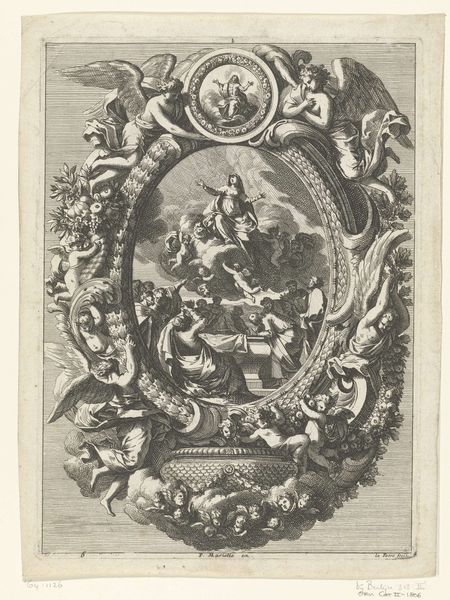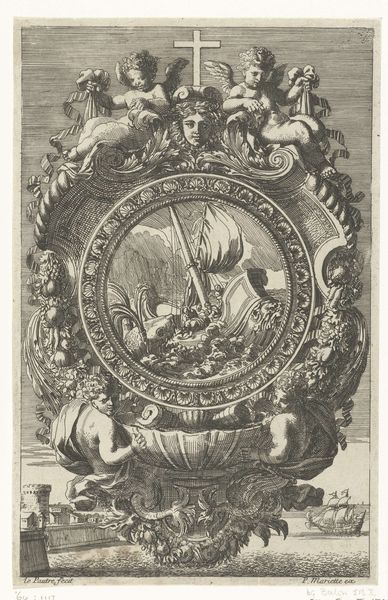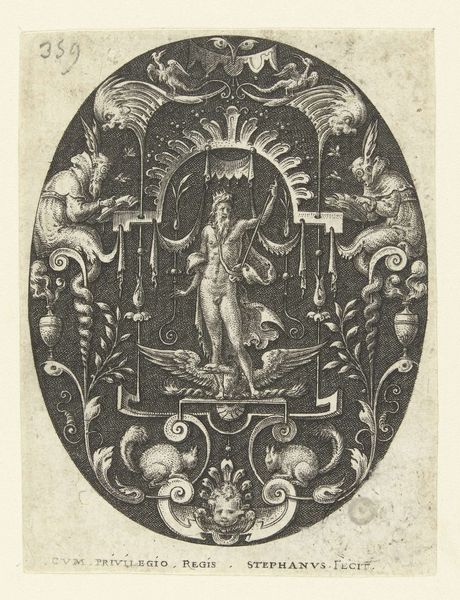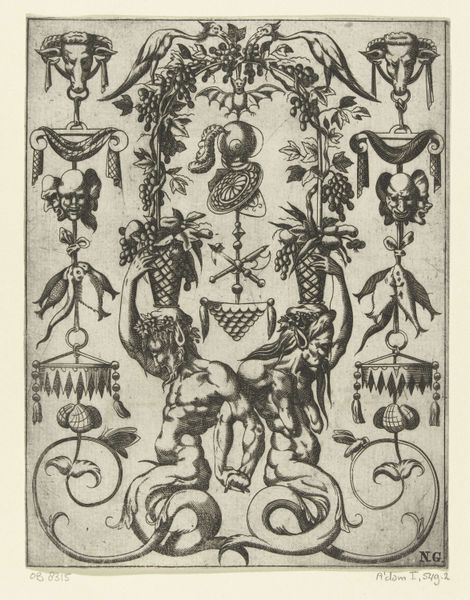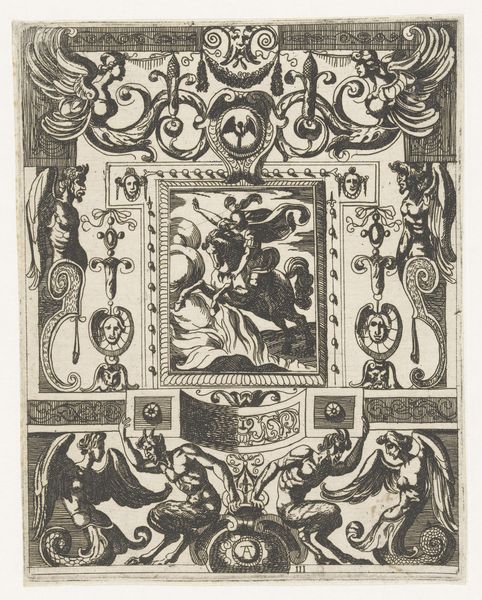
engraving
#
allegory
#
baroque
#
pen drawing
#
pen illustration
#
old engraving style
#
figuration
#
form
#
line
#
engraving
Dimensions: height 214 mm, width 152 mm
Copyright: Rijks Museum: Open Domain
Curator: Looking at "Kandelaar met Psyche en Amor," an engraving from around 1657-1661 by Jean Lepautre, currently held in the Rijksmuseum, I’m immediately struck by its baroque excessiveness. The visual field seems utterly saturated! Editor: The level of ornamentation is astounding! It's a pen drawing, a print. The fineness of the lines, the implied labor in producing something so ornate with such mechanical means… It speaks to a specific mode of production and dissemination of imagery at that time. Think of the market for these prints. Curator: Absolutely. Focusing on its formal properties, we see a central medallion depicting Psyche and Amor, surrounded by garlands, cherubs, and various ornamental motifs. The composition is rigorously symmetrical, which offers some respite amidst all the visual activity. Editor: Symmetrical, yes, but consider the social function of such imagery. Lepautre’s workshop produced designs for luxury objects. This wasn't 'high art' necessarily, but a design circulated amongst artisans. How many candlesticks were influenced by this very image? Where did this artisan get materials? Curator: An important point. I’m still fascinated by how Lepautre balances positive and negative space, creating a sense of depth and texture entirely through line. Note how he suggests volume in the drapery, or the roundness of the cherubs’ limbs, solely with varied line weight. Editor: And what about the cultural labor? We're looking at classical mythology filtered through baroque sensibilities. Psyche and Amor weren't just images; they carried meaning, influencing taste and desires. Candlesticks are luxury goods that also light spaces so this design carries a class dimension. Curator: Indeed. The engraving invites contemplation not just of its aesthetic qualities, but of its role in shaping the material world. A perfect blend of form and allegory! Editor: For me it asks deeper questions about art versus design in the baroque era, and of the modes of material production itself, highlighting class difference in accessing luxury materials and objects in 17th century society. An incredible thing!
Comments
No comments
Be the first to comment and join the conversation on the ultimate creative platform.
